+1
After reading this topic I’m a bit hesitant of putting an antenna on my roof. If even the experts like @Epyon and @BoRRoZ disagree about how dangerous it is, or what lightning precautions you should take…
+1
After reading this topic I’m a bit hesitant of putting an antenna on my roof. If even the experts like @Epyon and @BoRRoZ disagree about how dangerous it is, or what lightning precautions you should take…
Exactly. Electricity and especially lightning should be taken serious and not underestimated.
I wouldn’t go for ‘it won’t happen to me’ here because once it happens can be quite devastating.
This will very probably also impact damage insurance coverage.
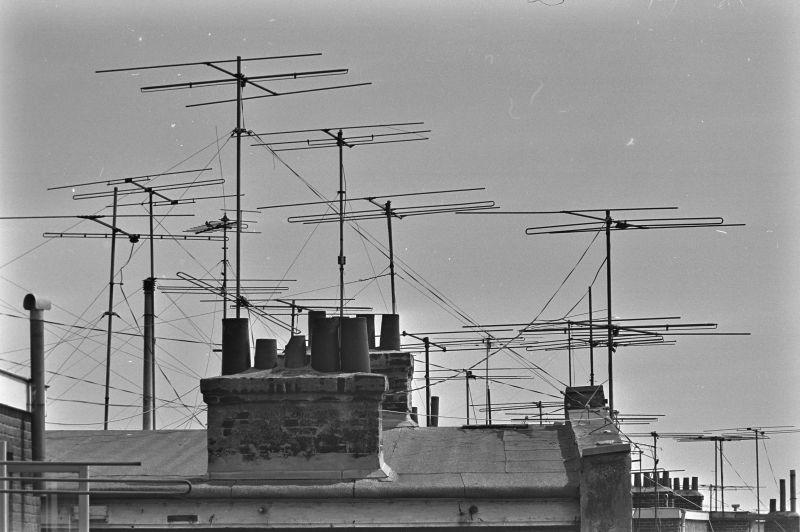
elderly among us remember this… lightning protection ? 
I guess the Milkman must still daily deliver his milk personally at your door in glass bottles… 
I see some shared risk there. Electronics in da house? Only some tubes probably.
Now try a single outdoor gateway antenna on the highest point on the roof of your current house and then try to convince your insurance company when they are trying hard not having to pay damage coverage, that everything was installed conforming to regulations.
Insurance representative: “Sir, you did not build a gateway but a Things Network Lightning Rod”. 
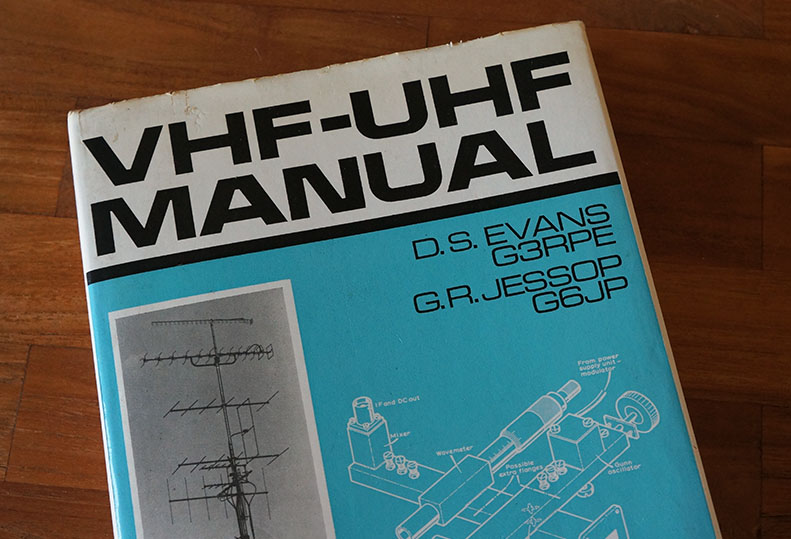
look what I found… nope, nothing about lightning protection 
don’t get me wrong, its always better to have it then to not have it (sounds like an ***** commercial)
in this building I’m not even allowed to place an antenna, so I will do an radio exam later this year
as an extra argument to be allowed to place one, for now its on my balcony… without protection
it will only blow up my gateway when hit
It depends on many factors. The chance that lightning strikes an antenna a meter or two higher than your roof is almost the same as winning the lottery. The chance that lightning strikes an antenna 15 meter higher than your roof or the closest obstacle is more in the vicinity of you having a car accident the next time you drive to work.
Also, if lightning strikes your antenna protruding 2m, it will have struck your home regardless. Lightning can only ‘sense’ lower impedance paths from a meter or two, so if it comes so close to your home it will probably just strike something else on your roof.
If you really want to do lightning protection, it will set you back multiple times the cost of the gateway. You need a dedicated 16mm² copper grounding wire running on the outside of your house to earthing rods, you need a lightning arrester, … All this also won’t protect your gateway, just your house in case of a direct strike.
I still have to finish my lab story about lightning protection. I finished the text ages ago, but need to make some figures for it as well  .
.
Okay…from what I read I figured that you and @BoRRoZ were sort of the two opposite sides of the opinions. Sorry, if I misunderstood, it was just that in general my impression from reading the forums was that some were more like “no point in spending money on lighting protection” and others were “whatever you do, make sure you install lightning protection”.
And like @bluejedi points out, electricity and lightning are things you don’t want to mess with.
So.looking forward to the lab story. Will you be making the distinction between (semi-)professional installations (on big buildings, offices etc) and people installing a 300 euro gateway in their attic?
BTW @bluejedi I would really have to check my insurance on this. I do not think they have any restrictions with regards to that.
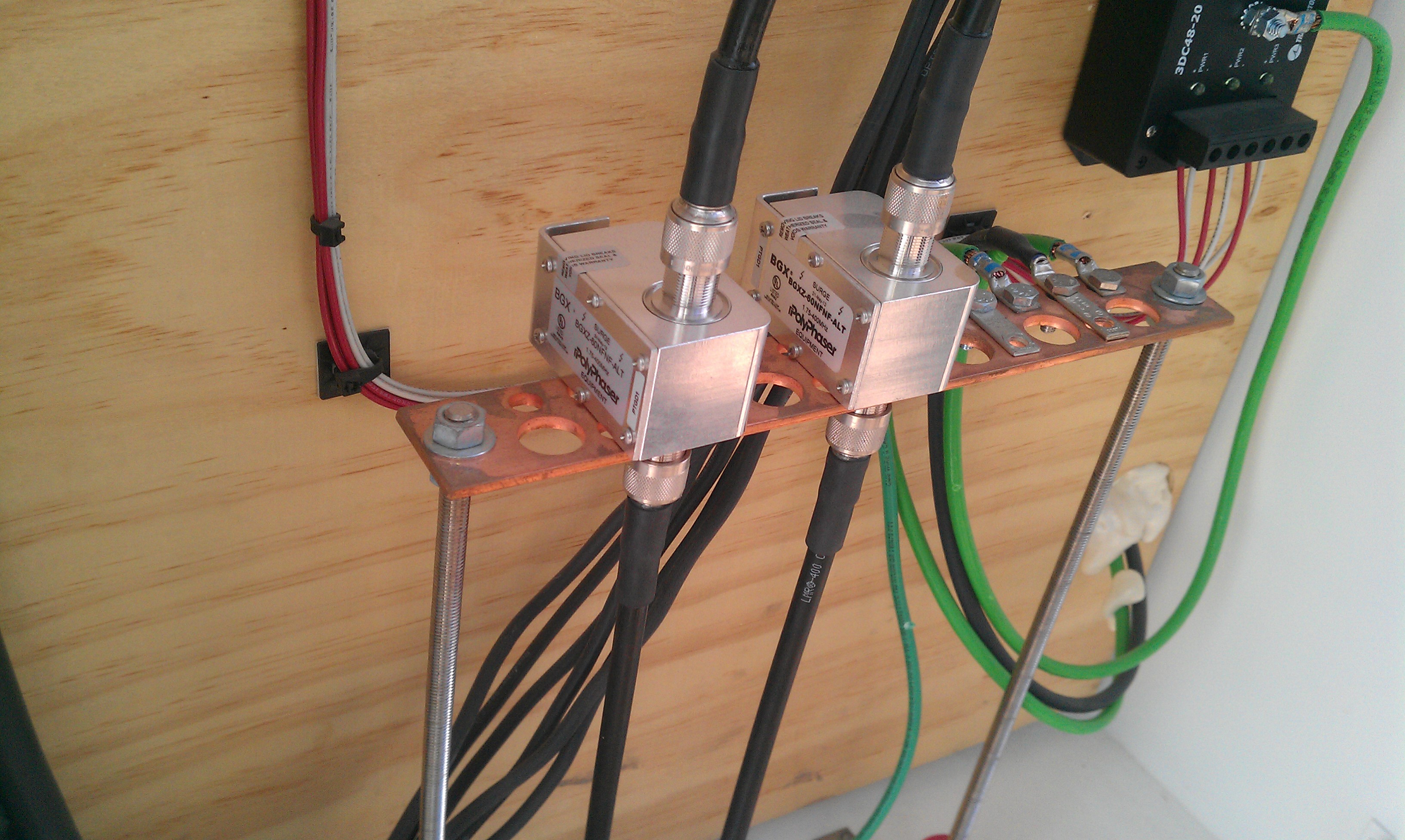
Just FYI. Typical lightning protection that I’ve worked on for equipment on a tower. Two coax/N-type signal cables and three DC power supplies to vulnerable outdoor equipment. All grounded onto a copper busbar which, in-turn, is earthed into the ground outside the building.
It works, and is a regulatory requirement in many situations, but it attenuates the signal by at least 1 to 2 dB and is expensive.
In my experience the basic earth and busbar work is always done by a specifically certified electrical contractor. Telecom people can then connect to the busbar.
Photo taken in the USA where this equipment is referred to as a “surge arrestor”.
My advice is to take precautions when installing on public buildings, unless you have a waiver from the building owner. If it’s your own home, nothing wrong with taking your chances. If you use common sense, chances that it will get hit by lightning are very very small. E.g. I live on the top floor of a four story high building. I’ve put my gateway on the roof, the antenna protrudes the technical installations on the roof by 0,5m. If lightning would ever strike, it would have struck regardless of the antenna. My (standard) home insurance also covers for strikes on antennas.
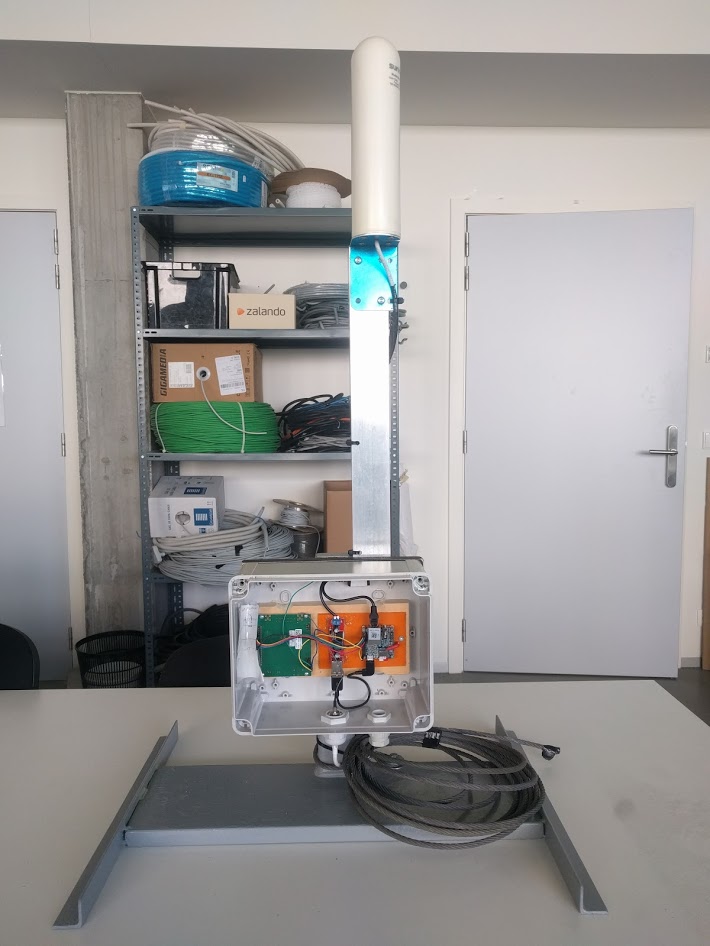
Picture of the setup while still in the lab.
It’s different when you erect a mast 15m heigh of course. But then you probably have the funds for lightning protection too  .
.
This is a very nicely done surge arresting setup. Mind if I use that pic in my labs story (with you as source)?
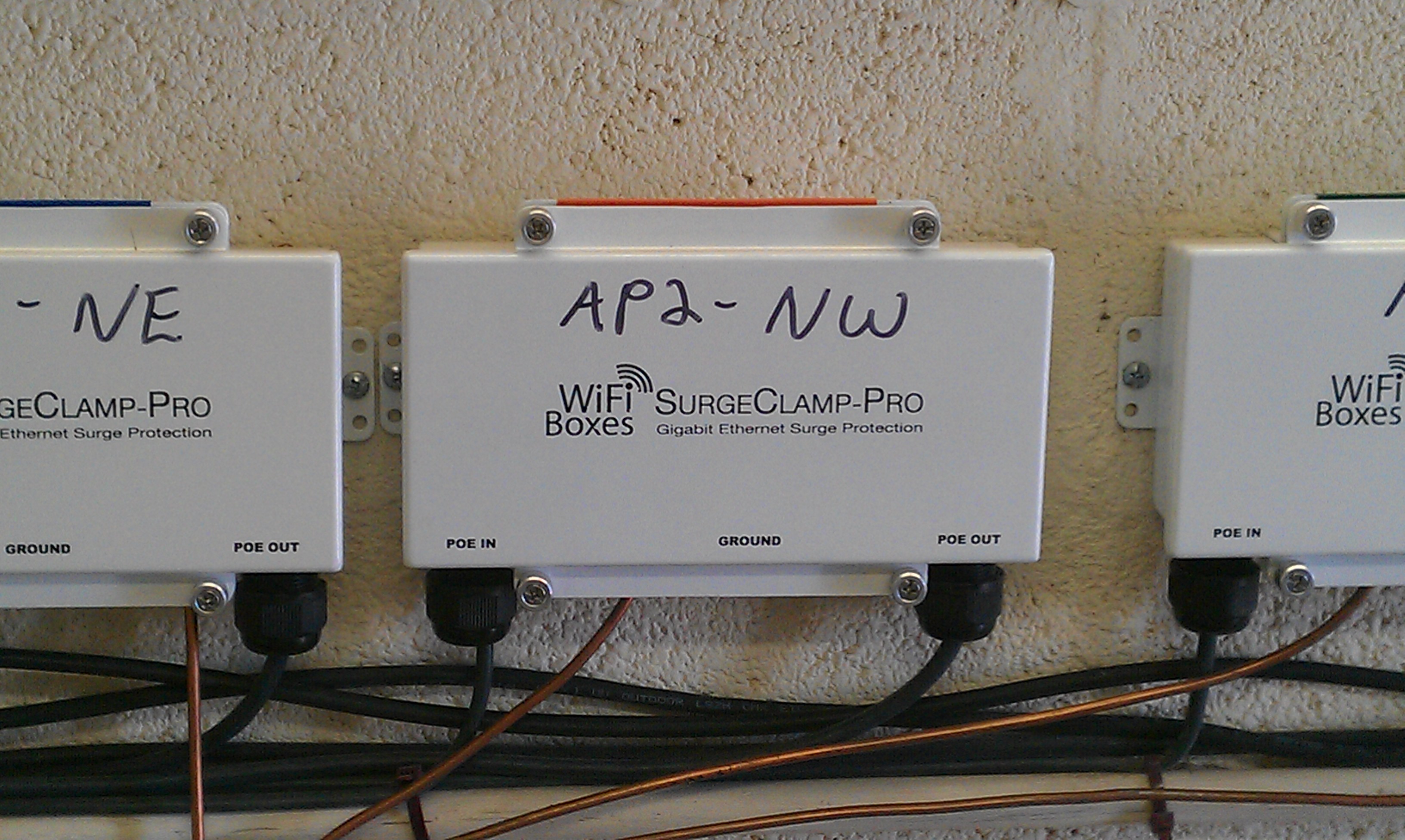
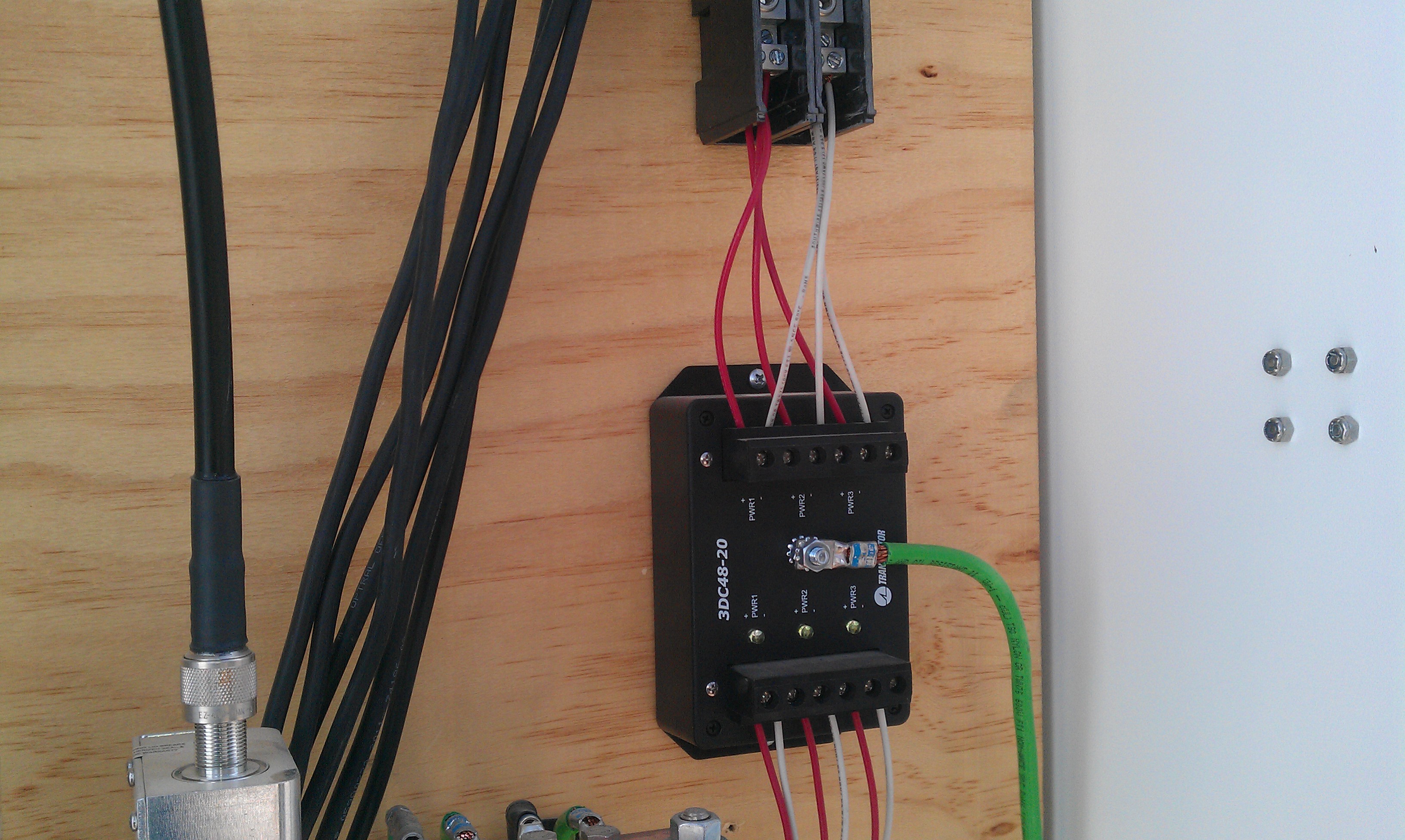
Please feel free to use pix as you see fit. I consider it public. Attached are a few more like it. All taken in shelters on tower sites.
Mine doesn’t mention antennas at all. Just lightning and fire, even if it is the cause of a construction error.
It also covers a crash of a spacecraft, so if the Tesla Roadster crashes on my house, it is covered.
Any antenna I would be placing would be small, something like the SD868L or the GP901C, no huge poles on high buildings.
Same like here in Flanders, ‘blikseminslag’ should also cover strikes on aerials. Check with your insurance agent to be sure.
Yeah, I use the Sunhans antenna. Especially because it looks unsuspicious  .
.
I made some photo’s of my effort to make a Lora antenna. Still needs to be tested but in a simple field-test it at least seems to function a bit. See My Efforts
@paulb Thanks for the offer but I would like to measure it on a spectrum analyser or at least an SWR meter. I don’t know if I could tell that the antenna is functioning optimally by just using it. But again, thanks for the offer.
A large ‘female toy’ on the roof looks unsuspicious? 
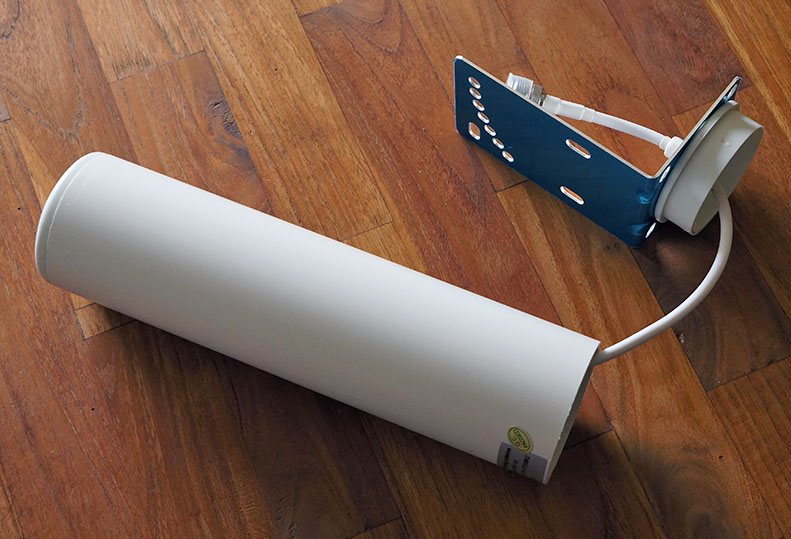
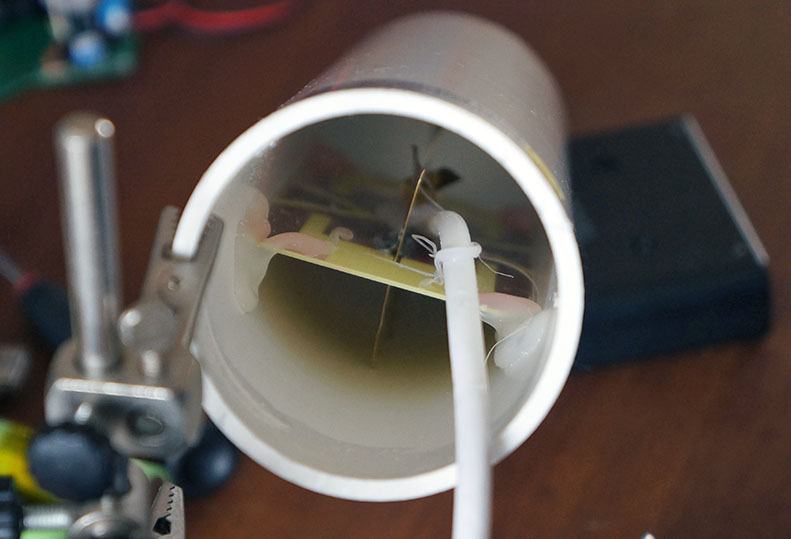
no battery compartment inside  just some cheap pcb and a piece of copper foil, and glue, lots of glue
just some cheap pcb and a piece of copper foil, and glue, lots of glue
That’s why they added the cable. ![]()
Boys…don’t you think this is getting a bit off-topic? If you go on like this one of the moderators will come in and move your discussion to a more suitable place…oh wait…
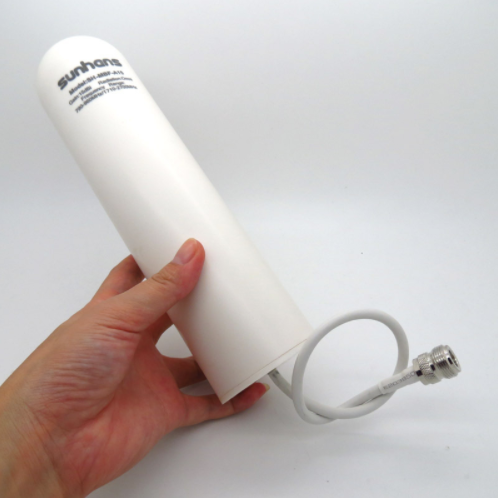
Sunhans 790-2700MHz Omnidirectional Fiberglass Antenna
Off-topic? This is the BIG Antenna topic. 
(But they should have used a different picture for their antenna.)